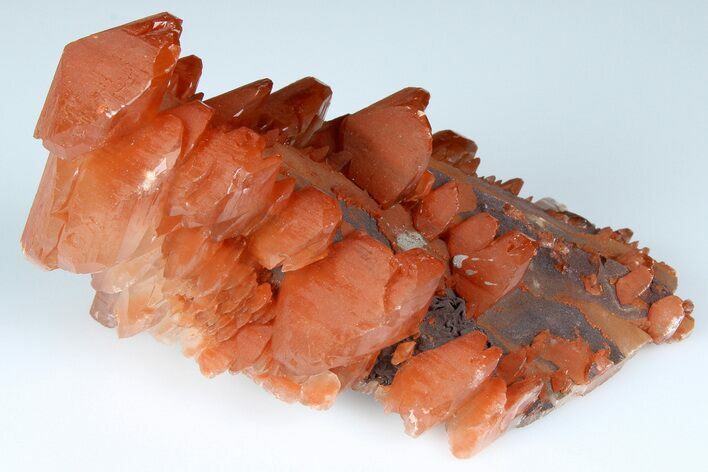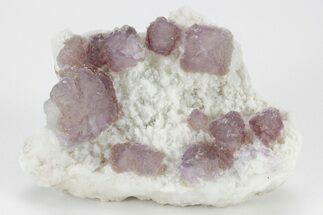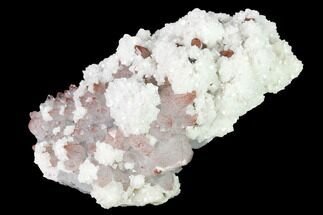This Specimen has been sold.
2.9" Hematite "Pagoda Calcite" on Scalenohedral Calcite - Fluorescent!
This is a fascinating cluster of lustrous "pagoda calcite" (also known as "mushroom calcite" and "poker chip calcite") crystals that formed over a scalenohedral calcite crystal. The pagoda-style calcite crystals contain hematite inclusions which give them their red coloration. This specimen was collected from the Fengjiashan Mine (Daye Copper mine) in the Hubei Province of China and under shortwave UV, they react by fluorescing a vibrant orange color.
It comes with an acrylic display stand.
It comes with an acrylic display stand.
About Calcite Crystals
Calcite crystals are a form of calcium carbonate (CaCO₃) known for their diverse shapes, transparency, and vibrant range of colors. They typically form in rhombohedral, scalenohedral, or prismatic shapes, often with well-defined, sharp edges and glossy surfaces. Calcite crystals are often translucent or transparent, sometimes displaying a double refraction effect where objects viewed through the crystal appear doubled. They can appear in various colors—white, clear, yellow, pink, blue, green, and orange—depending on impurities or trace minerals.
A notable characteristic of calcite is its reaction with weak acids like vinegar, which causes it to effervesce, or fizz, as it releases carbon dioxide. This property makes calcite crystals a key tool in geological identification and studies. Calcite forms in many environments, from sedimentary rocks like limestone and marble to hydrothermal veins.
Calcite crystals are a form of calcium carbonate (CaCO₃) known for their diverse shapes, transparency, and vibrant range of colors. They typically form in rhombohedral, scalenohedral, or prismatic shapes, often with well-defined, sharp edges and glossy surfaces. Calcite crystals are often translucent or transparent, sometimes displaying a double refraction effect where objects viewed through the crystal appear doubled. They can appear in various colors—white, clear, yellow, pink, blue, green, and orange—depending on impurities or trace minerals.
A notable characteristic of calcite is its reaction with weak acids like vinegar, which causes it to effervesce, or fizz, as it releases carbon dioxide. This property makes calcite crystals a key tool in geological identification and studies. Calcite forms in many environments, from sedimentary rocks like limestone and marble to hydrothermal veins.
SPECIES
Calcite & Hematite
LOCATION
Fengjiashan Mine, Daye County, Huangshi Prefecture, Hubei Province, China
SIZE
2.9 x 2.05"
CATEGORY
ITEM
#185644
 Reviews
Reviews














